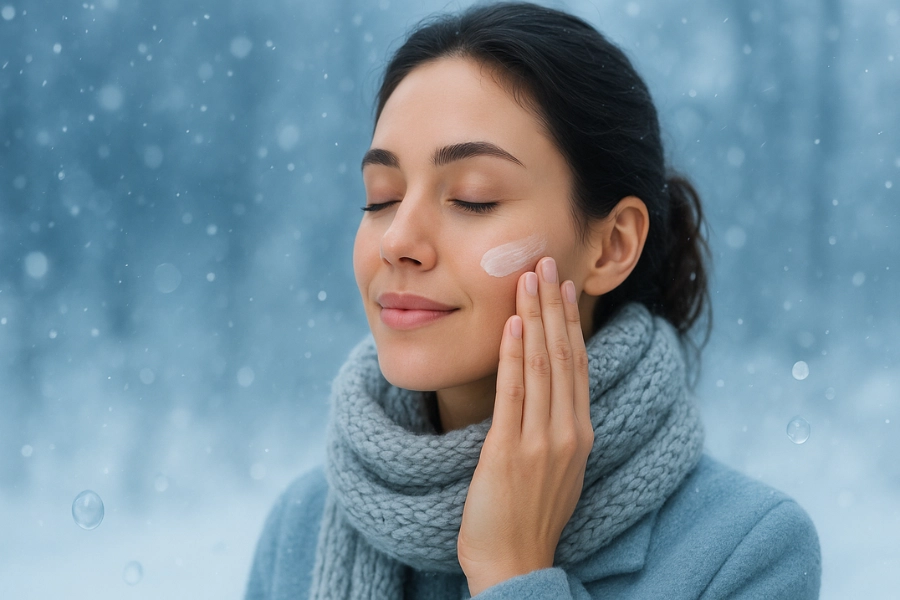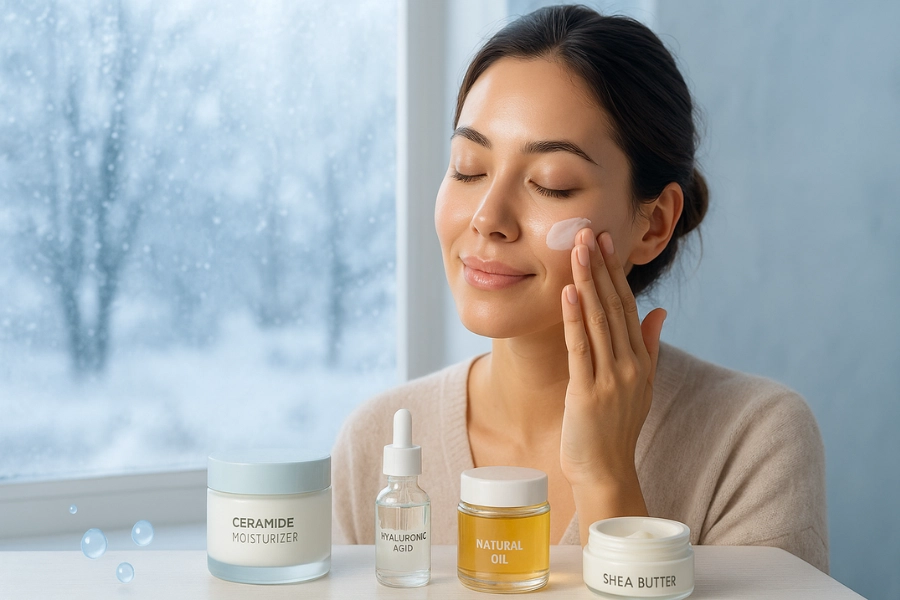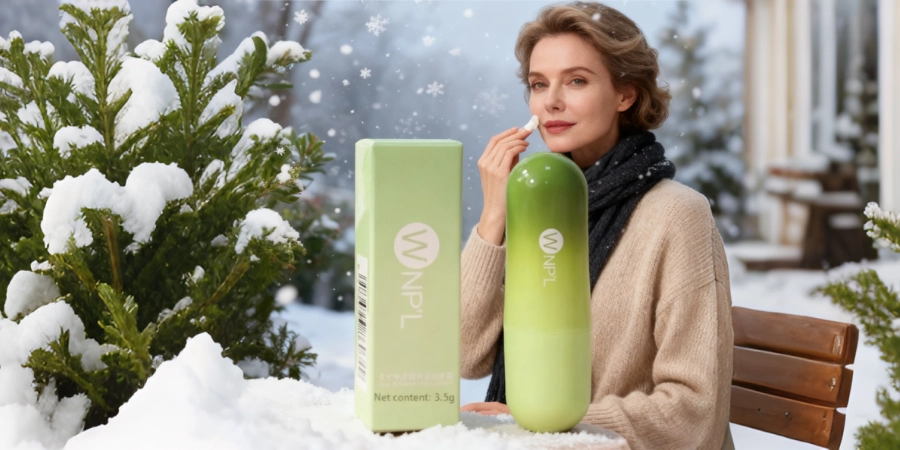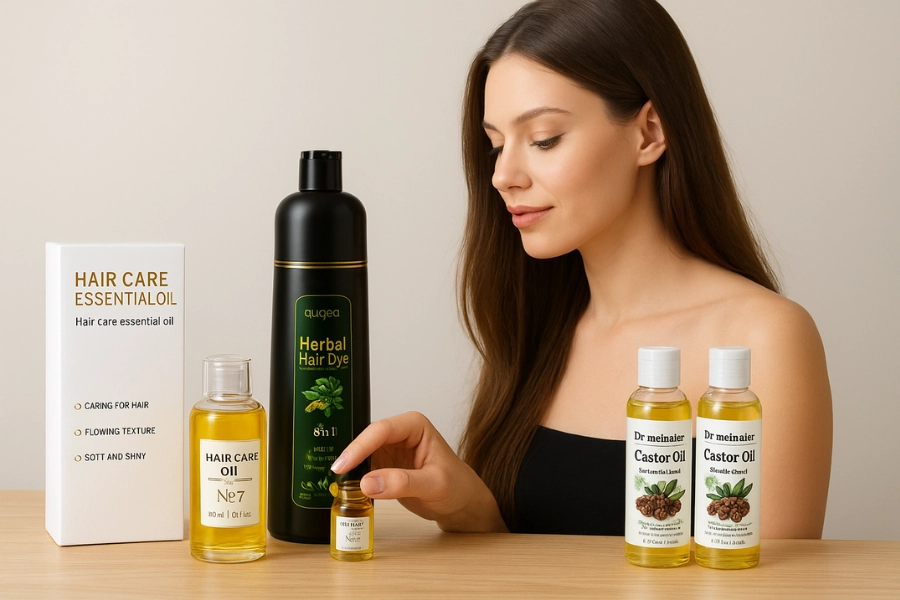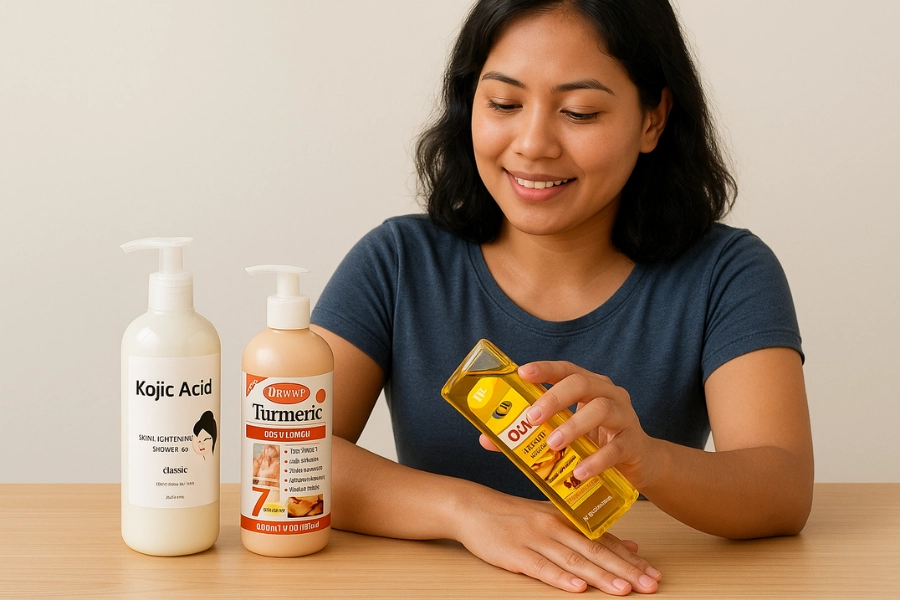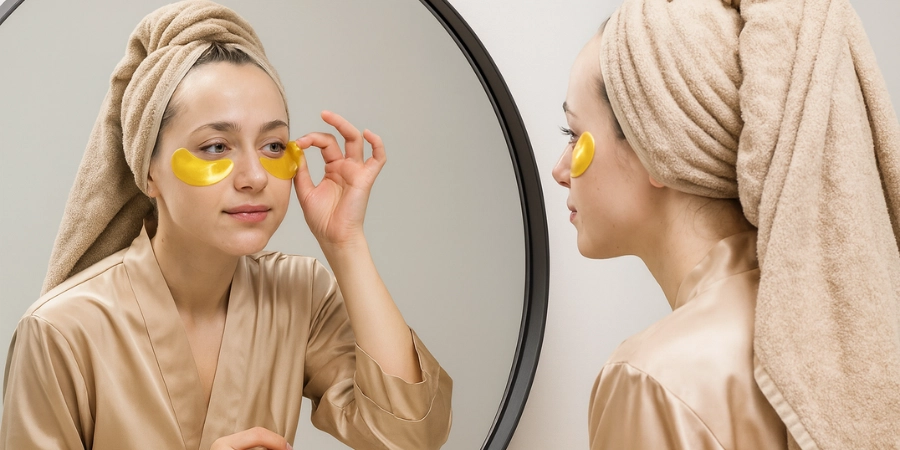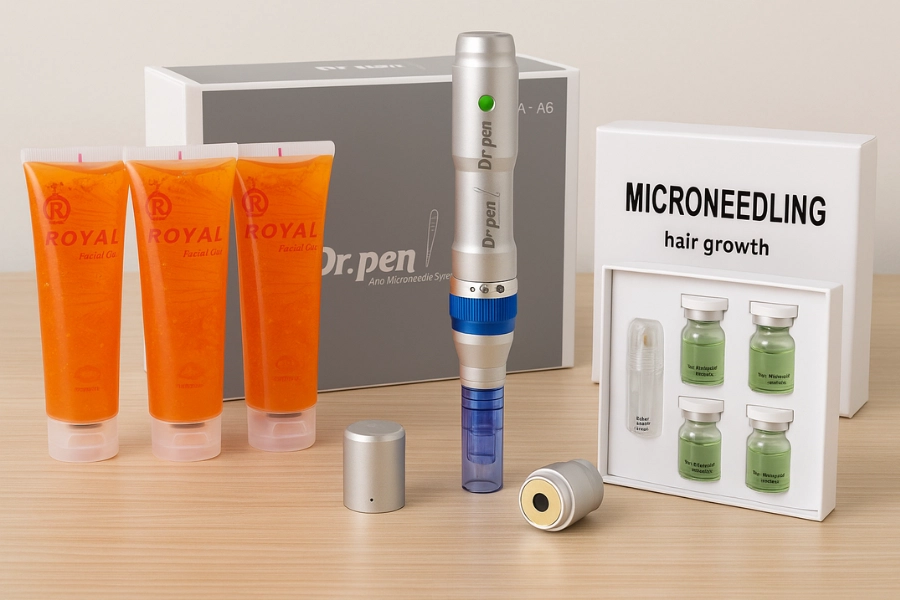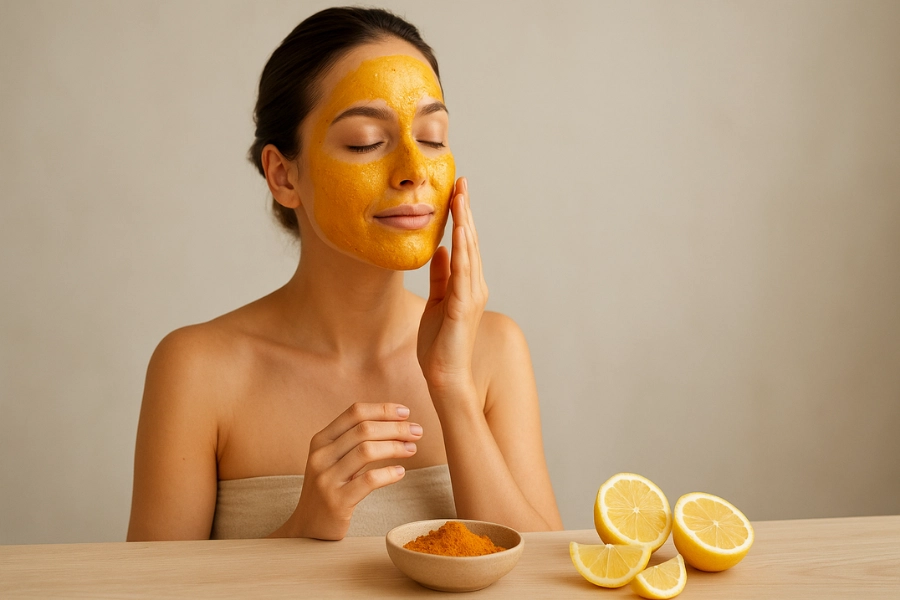The Face Care Routine for Oily Skin is essential for managing shine, breakouts, and enlarged pores. With the right steps, you can balance oil production while keeping your skin hydrated and healthy. This guide will walk you through morning and night routines, ingredients to use, and simple lifestyle tips for lasting results.
We’ll explain the causes of oily skin, debunk common myths, and share effective morning and night routines. Learn which ingredients work best, what to avoid, and how daily habits support clear skin. The right approach makes skincare much easier.
Understanding Oily Skin: More Than Just Shine
Oily skin means your sebaceous glands produce too much sebum. Sebum protects and hydrates, but in excess, it adds shine, clogs pores, and can cause acne, especially in the T-zone (the nose, chin, and forehead).
However, oily skin isn’t all bad news. The sebum that causes shine also helps keep skin moisturized and can help reduce the appearance of fine lines and wrinkles as you age. The goal is not to eliminate oil completely but to manage its production and maintain a healthy balance.
What Causes Oily Skin?
Several factors influence the amount of oil your skin produces. Understanding them is the first step toward effective management.
- Genetics: Your genes are the primary determinant of your skin type. If your parents have oily skin, you are more likely to have it as well. This genetic predisposition influences the number and activity of your sebaceous glands.
- Hormones are another main reason for more oil production. Androgens, which are hormones in both men and women, can make your skin produce more oil. This is why many people get oily skin and pimples during puberty, their period, pregnancy, or when stressed.
- Environmental Factors: Your surroundings impact your skin. High humidity and hot weather can increase sebum production, making your skin feel greasier. Dry air can dehydrate the skin, prompting it to produce more oil as a compensatory response.
- Using the wrong skin products or scrubbing too hard can exacerbate oily skin. Harsh face washes, excessive exfoliation, or skipping moisturizer can dry out your skin, causing it to produce even more oil.
The Biggest Mistake You’re Making with Oily Skin
The most common error people with oily skin make is trying to strip away every bit of oil. Using harsh, alcohol-based toners and drying cleansers, they scrub their skin to achieve a matte finish. While this gives temporary relief, it ultimately backfires. Stripping the skin of its natural oils damages the barrier, triggering the skin to overcompensate by producing more sebum.
Harsh products make oily skin oilier. Instead, keep skin hydrated with lightweight, non-comedogenic moisturizers to help balance oil production.
The Essential Morning Face Care Routine for Oily Skin
The morning skincare routine should prioritize removal of overnight impurities, restoration of skin balance, and protection against environmental stressors encountered during the day.
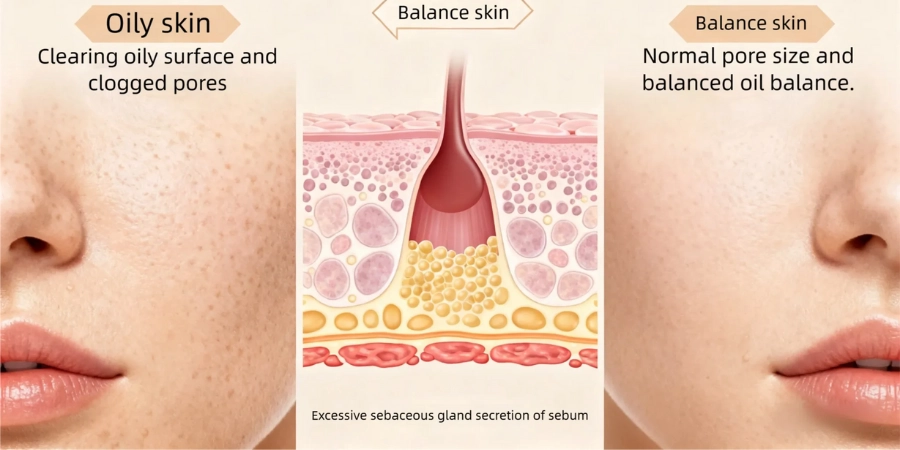
Step 1: Cleanse with a Gentle Touch
Use a gentle cleanser to remove overnight oil, dead skin, and sweat. Avoid harsh, sulfate cleansers, which can cause rebound oil. Your skin should feel clean but not tight.
Step 2: Tone to Balance and Prep
After washing, use a toner to balance your skin and get it ready for the next step. Newer toners are gentle and don’t have alcohol. They help remove leftover cleanser, add a bit of water back, and can have helpful things like witch hazel for pores or green tea for soothing.
Step 3: Apply Targeted Treatments
Now is the time to use serums for any skin concerns. If you have oily or acne-prone skin, try a serum with niacinamide. This ingredient helps control oil, shrink pores, and even out your skin tone. You can also use a serum containing Vitamin C to protect your skin and help fade dark spots caused by acne.
Step 4: Hydrate with a Lightweight Moisturizer
A common myth is that oily skin doesn’t need moisturizer, but that’s not true. When your skin is dry, it actually makes more oil. Using a moisturizer helps keep your skin balanced and healthy.
Step 5: Protect with an Oil-Free Sunscreen
Sunscreen is essential in every skincare routine. Daily sun protection prevents damage, premature aging, and skin cancer. For oily skin, choose an oil-free, non-comedogenic sunscreen with an SPF of 30 or higher. opt for lightweight lotions or gels that absorb quickly and provide a matte or natural finish.
Your Perfect Nighttime Skincare Routine for Oily Skin
Night routines focus on cleansing, repairing, and supporting skin renewal while you sleep.
Step 1: Double Cleanse to Dissolve Impurities
The skin absorbs makeup, sunscreen, and oil during the day. Double cleansing—first with oil-based, then water-based cleanser—removes all impurities.
First, use an oil-based cleanser or balm to remove makeup, sunscreen, and excess oil. Massage it on dry skin, add water, and rinse. Next, use a gel or water-based cleanser to gently wash away any residue. This gets your skin ready for the next steps.
Step 2: Exfoliate for a Brighter Complexion (2-3 Times a Week)
Exfoliation removes dead skin and unclogs pores, but only does it 2-3 times a week to protect your skin barrier.
Chemical exfoliants (like AHAs and BHAs) work best for oily skin. Scrubs may cause irritation and should be avoided.
Step 3: Indulge in a Rebalancing Treatment Mask
Using a mask once a week gives your skin a boost. Clay masks absorb excess oil, while hydrating masks help keep the skin calm and moisturized. Use a hydrating mask once or twice a week to help reduce the amount of oil your skin produces while you sleep.
The Power of a Professional-Grade Jelly Mask
For an extra boost of hydration without oil, consider using a professional jelly mask. These masks provide deep moisture without clogging pores. For example, Nielies‘ jelly masks deliver soothing ingredients, ease irritation, and support balanced oil production. You’ll wake with skin that feels refreshed, comfortable, and less oily.
Step 4: Apply Serums and Moisturizer
After cleansing (and exfoliating or masking), apply your targeted treatment serums just as you would in the morning. At night, you can also incorporate ingredients like retinoids, which support cell turnover and keep pores clear. Finish with a moisturizer. Your night cream can be a bit richer than your day cream, but choose one that won’t clog your pores.
- Salicylic Acid (BHA): Exfoliates inside the pores to prevent clogs.
- Niacinamide: Regulates oil production, minimizes pores, and strengthens the skin barrier.
- Hyaluronic Acid: A powerful humectant that draws moisture into the skin without adding oil.
- Clay (Kaolin/Bentonite): Found in masks, it absorbs excess oil and purifies pores.
- Retinoids: Vitamin A derivatives that speed up cell turnover, helping to prevent acne and improve skin texture.
Ingredients to Avoid
- Alcohol (Denatured/SD): Found in many toners and astringents, it is extremely drying and irritating.
- Mineral Oil & Coconut Oil: These are highly comedogenic and can easily clog pores for those with oily skin.
- Harsh Sulfates (SLS/SLES): Often found in cleansers, they strip the skin of its natural oils.
- Heavy Emollients and Occlusives: Ingredients like shea butter can be too rich and may lead to congestion.
Natural Remedies and Lifestyle Tips for Oily Skin
In addition to a structured skincare regimen, making specific lifestyle modifications and implementing at-home interventions can help manage oily skin.
Simple At-Home Skincare Tips
Blotting papers are a great way to absorb excess oil during the day without disturbing your makeup. Simply press a sheet onto the shiny areas of your face for a few seconds. Additionally, Inco Blotting papers are handy for soaking up extra oil during the day without messing up your makeup. Just press one on shiny spots for a few seconds. Using a clay mask once a week can also help remove impurities and reduce oiliness. Snacks, white bread, and processed carbohydrates can cause a spike in insulin, which may, in turn, stimulate the production of oil.
Some studies also suggest a link between dairy consumption and acne. Paying attention to how your skin reacts after consuming these foods can be helpful. A balanced diet rich in antioxidants, vegetables, and lean proteins is always beneficial for overall skin health.
With a steady and mindful skincare routine, you can learn to balance your skin’s needs and see real improvements. Achieving healthy, balanced skin is possible.


